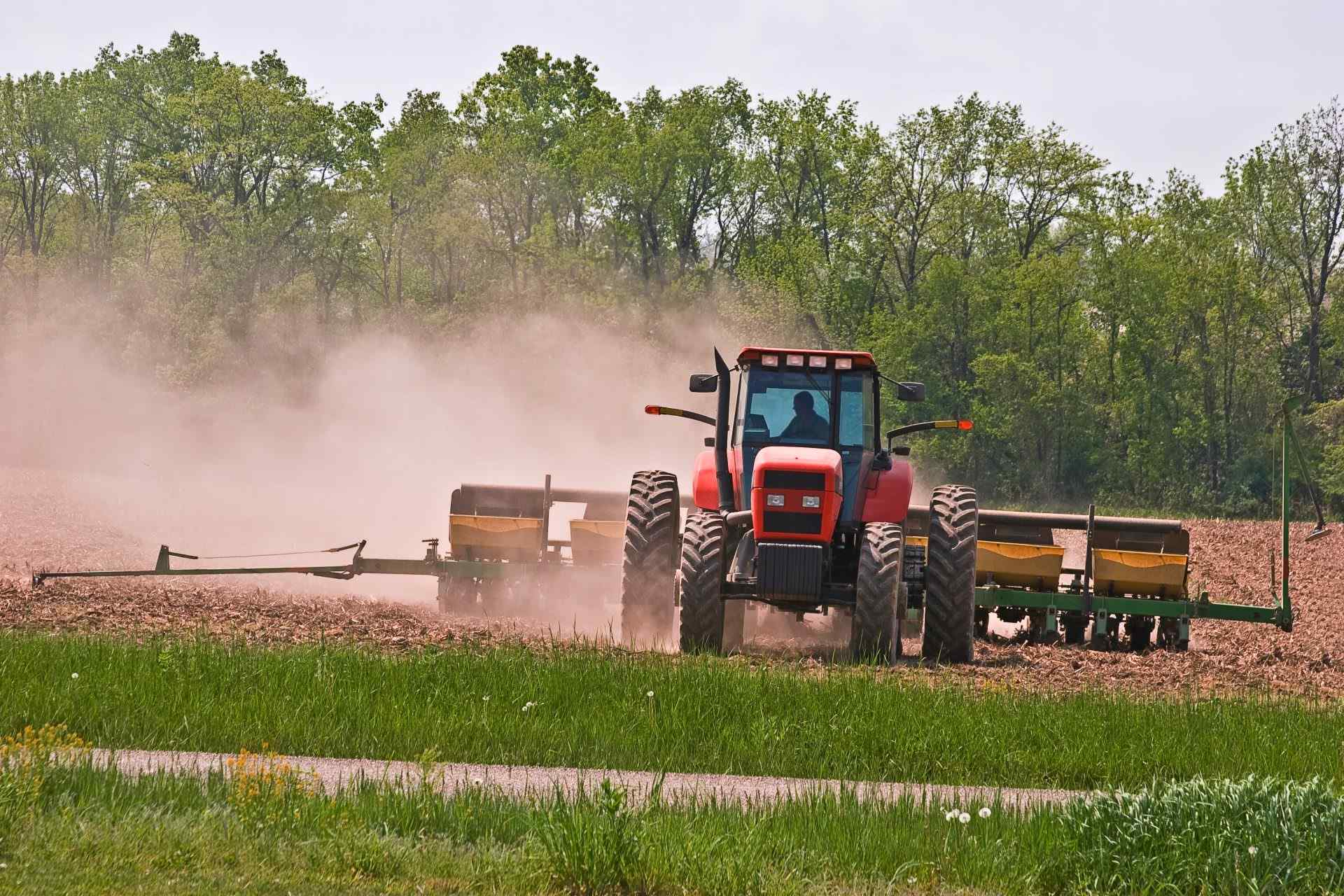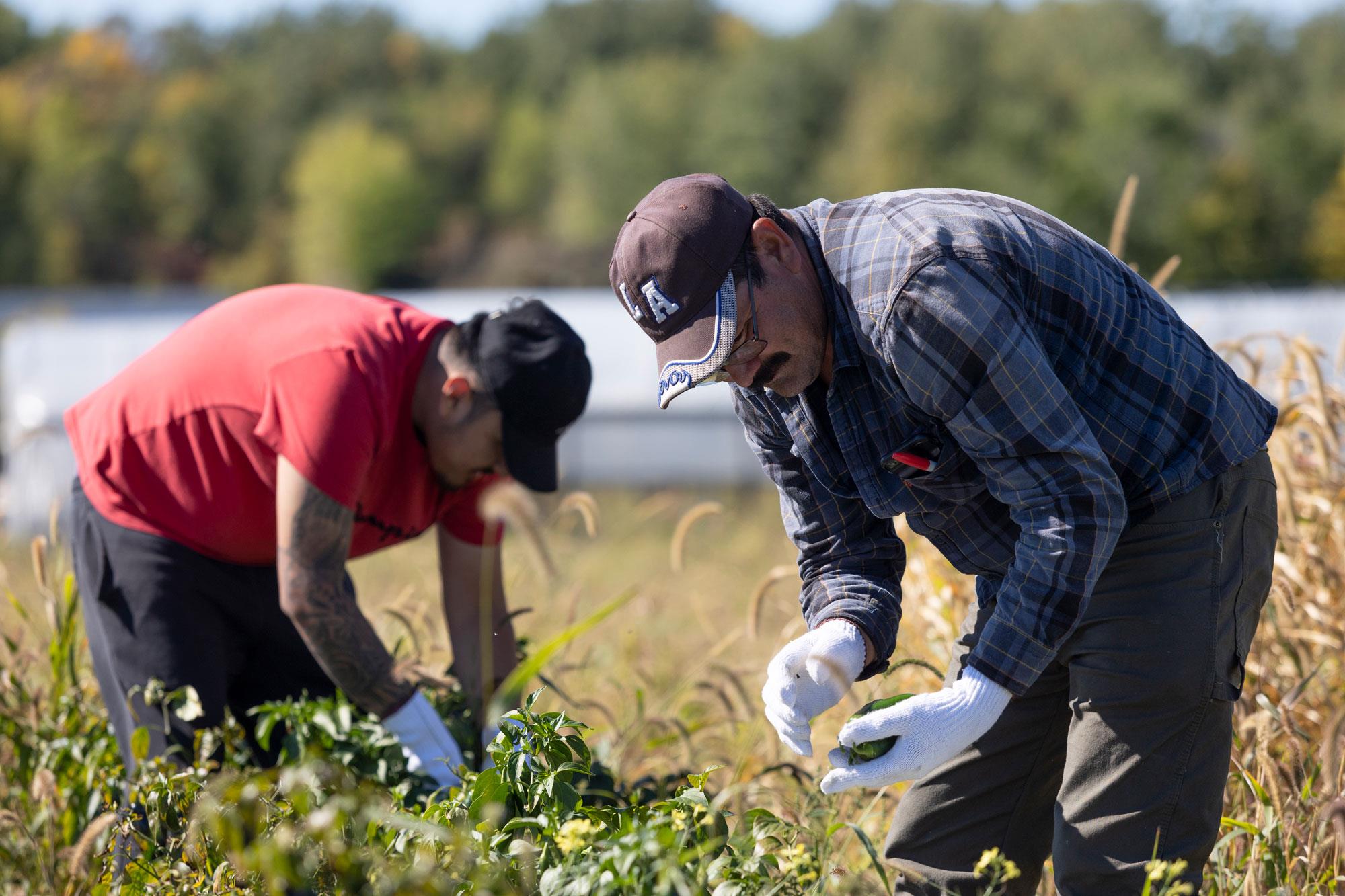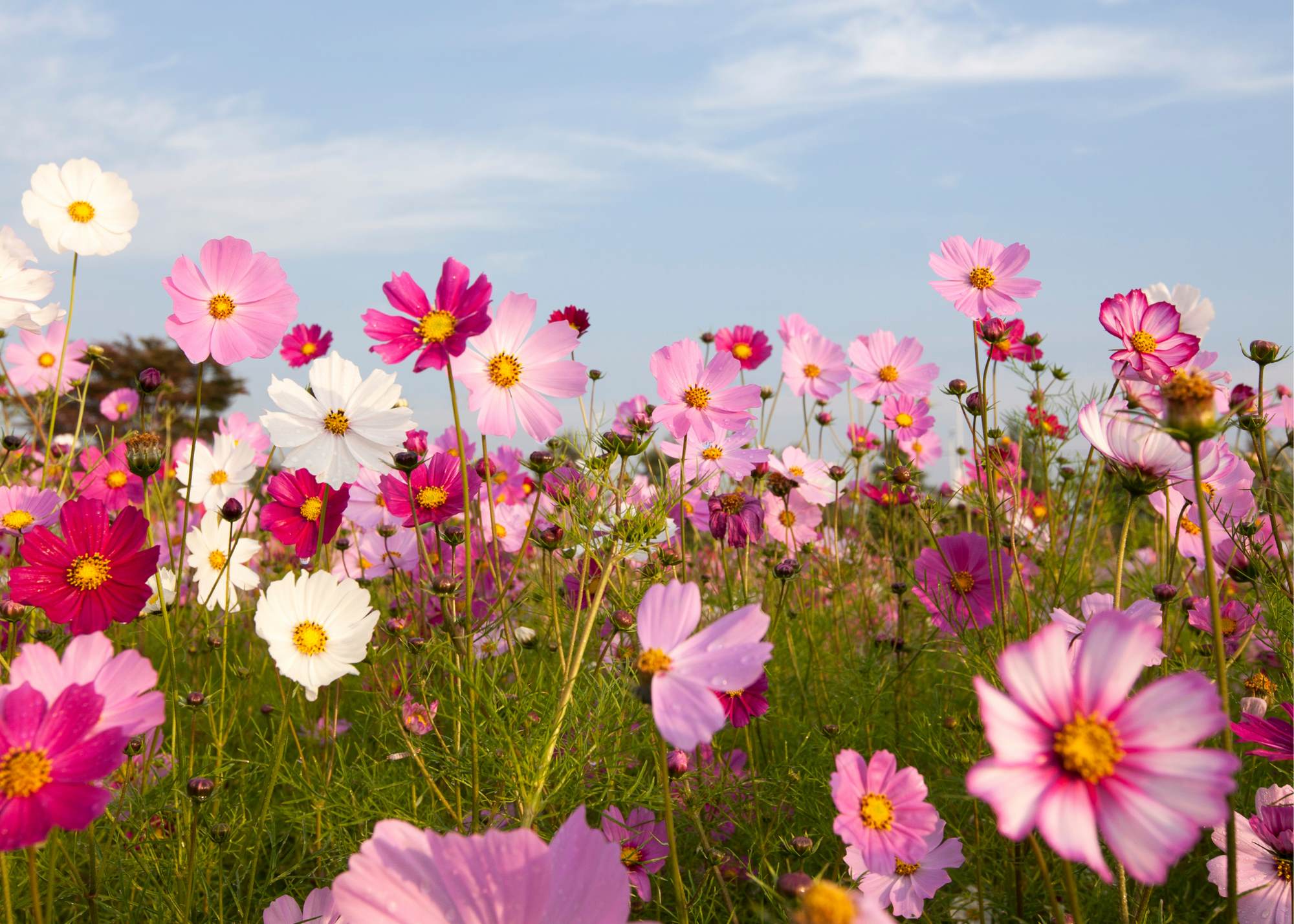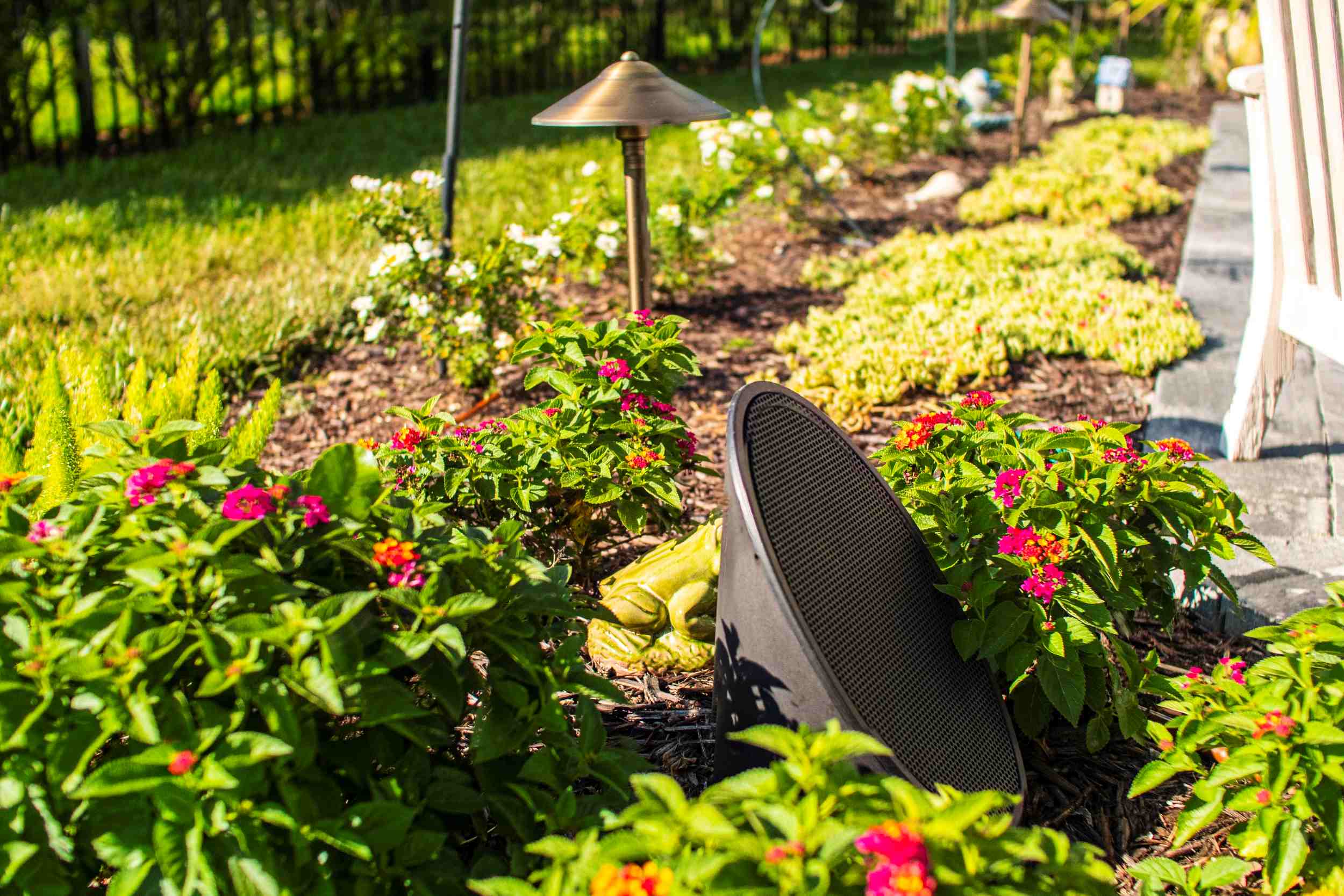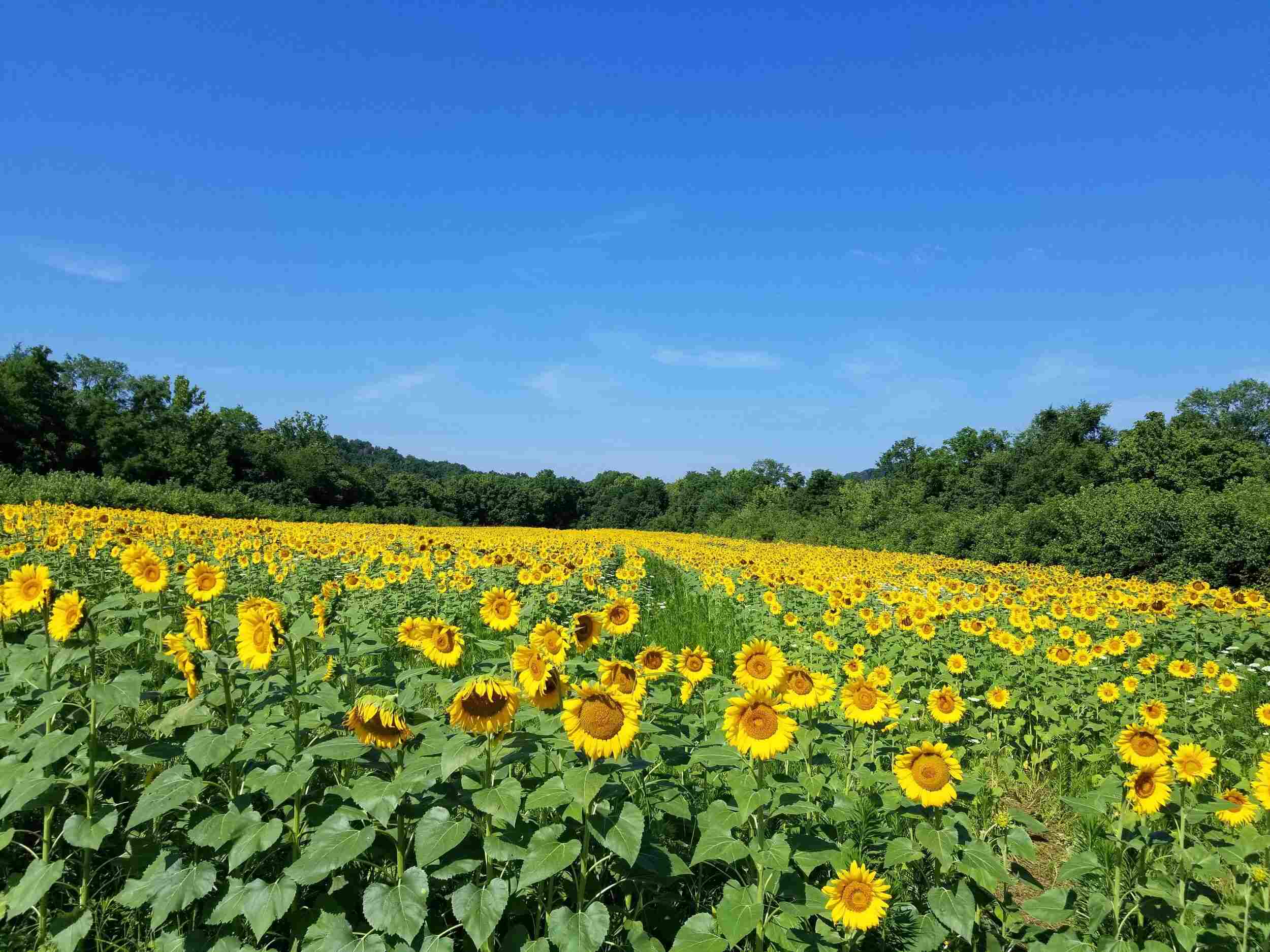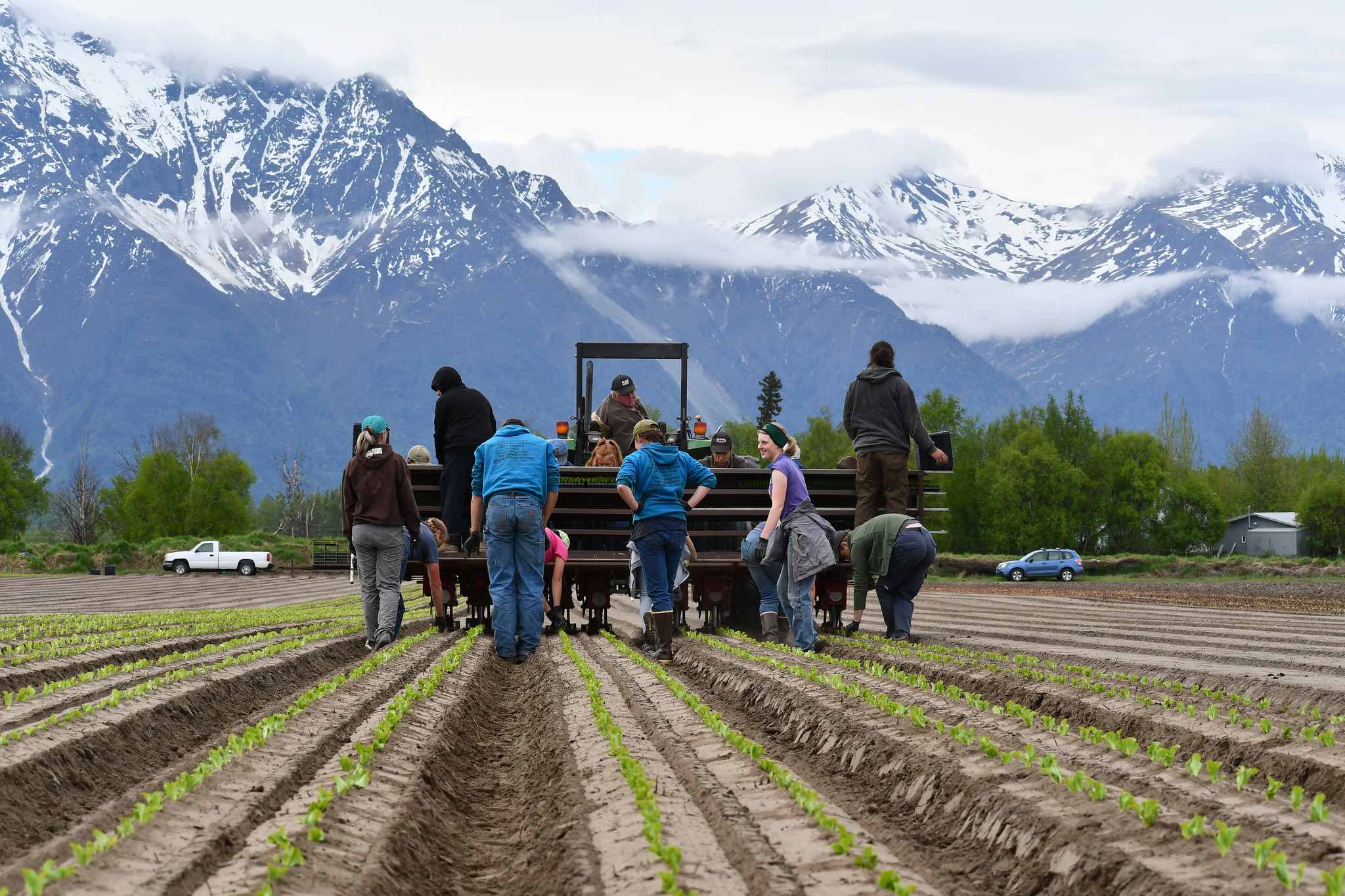Home>Gardening Basics>Understanding Soil>What Planting Zone Is North Dakota
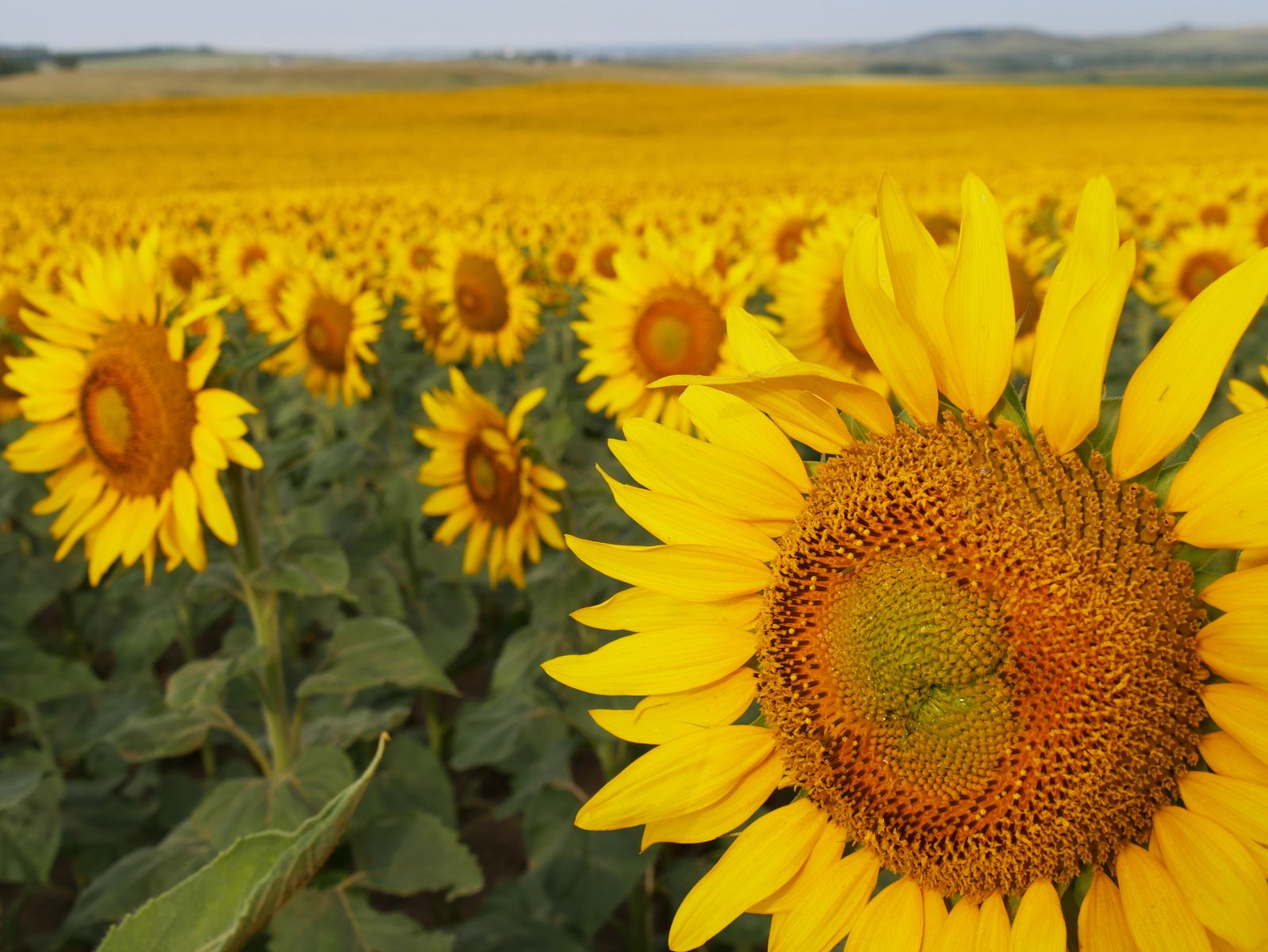

Understanding Soil
What Planting Zone Is North Dakota
Modified: January 22, 2024
Learn about the planting zone in North Dakota and the importance of understanding soil for successful gardening.
(Many of the links in this article redirect to a specific reviewed product. Your purchase of these products through affiliate links helps to generate commission for Chicagolandgardening.com, at no extra cost. Learn more)
Table of Contents
Introduction
Welcome to North Dakota, a state known for its rich agricultural heritage and breathtaking natural beauty. As an aspiring gardener in North Dakota, it is essential to understand the concept of planting zones and how they affect the success of your garden. Whether you are a seasoned gardener or a beginner, having a grasp of planting zones will help you choose the right plants and maximize your gardening efforts.
Planting zones are geographical regions that are classified based on their climate and temperature patterns. The United States Department of Agriculture (USDA) has developed a system called the Plant Hardiness Zone Map that divides North America into different zones, each indicating the average minimum winter temperature in a specific area. This map serves as a valuable tool for gardeners as it helps them determine which plants are most likely to thrive in their local climate.
North Dakota experiences a continental climate, characterized by hot summers and cold winters. The state is divided into four distinct planting zones: Zone 3, Zone 4, Zone 5, and Zone 6. Each zone has its own unique set of climatic conditions and temperature ranges that can influence the types of plants that can be successfully grown there.
In Zone 3, which covers the northernmost part of the state, the average minimum winter temperature can reach as low as -40°F (-40°C). This zone is ideal for hardy perennial plants that can withstand extreme cold, such as conifers, shrubs, and cold-tolerant perennials.
Zone 4 encompasses the central and northeastern parts of North Dakota, with average minimum winter temperatures ranging from -30°F (-34°C) to -20°F (-29°C). This zone is suitable for a wide variety of plants, including hardy fruits like apples, pears, and cherries, as well as cold-tolerant vegetables like carrots, potatoes, and broccoli.
Zone 5 covers the southeastern part of the state, where average minimum winter temperatures range from -20°F (-29°C) to -10°F (-23°C). This zone offers a longer growing season and is ideal for a diverse range of plants, including flowering perennials, herbs, and cool-season vegetables like lettuce, spinach, and peas.
Lastly, Zone 6, which includes the southwestern corner of North Dakota, has average minimum winter temperatures that range from -10°F (-23°C) to 0°F (-18°C). This zone provides a favorable environment for a wide variety of plants, including tender perennials, warm-season vegetables like tomatoes and peppers, and a vast array of annual flowers.
Understanding the planting zones specific to North Dakota will help you make informed decisions about what plants are suitable for your garden. By selecting plants that are well-adapted to the local climate, you can increase the chances of a successful and thriving garden. In the following sections, we will explore the planting zone map of North Dakota in more detail and discuss the factors that influence planting zones in the state. We will also provide some recommendations for the best plants to grow in each zone and offer some helpful tips for gardening in North Dakota’s challenging climate.
Understanding Planting Zones
Planting zones play a crucial role in determining which plants will thrive in a particular area. They provide valuable information about the average minimum winter temperatures, which is a key factor in determining the success of your garden. By understanding planting zones, you can select plants that are well-suited to your region’s climate and ensure a more successful gardening experience.
The USDA Plant Hardiness Zone Map is the most widely used system for classifying planting zones in North America. It divides the continent into 13 zones, each representing a 10°F (-12.2°C) difference in the average minimum winter temperature. The zones are further divided into subzones, indicated by the letters ‘a’ and ‘b,’ to represent a 5°F (-15°C) difference within each zone.
When selecting plants for your garden, it’s important to choose those that are rated for your specific zone. Plants labeled as suitable for a certain zone will have a greater chance of survival and thriving in that particular climate. The planting zone information can usually be found on plant tags, seed packets, or online plant descriptions.
It’s essential to note that while planting zones provide valuable guidance, they are not the only factor to consider when selecting plants. Other factors such as soil type, sunlight exposure, moisture levels, and microclimates within your garden can also influence plant growth and success. Therefore, it’s always a good idea to research and understand the specific needs of each plant before adding it to your garden.
In addition to the USDA Plant Hardiness Zone Map, there are other planting zone systems used in different parts of the world. These include the Köppen climate classification system, the Sunset Western Garden Book zones, and various regional or local zone maps. It’s important to familiarize yourself with the specific zone system relevant to your area to ensure you are selecting plants appropriate for your local climate.
The concept of planting zones is not limited to outdoor gardening. It is also relevant to indoor gardening and container gardening. If you are planning to grow plants indoors, understanding the specific needs and requirements of your chosen plants, including their preferred temperature ranges, is crucial for their successful cultivation.
By grasping the concept of planting zones, you can make informed decisions when selecting plants for your garden, whether it’s an outdoor plot, a balcony container garden, or an indoor setup. Matching your plant choices to your local zone will significantly increase the likelihood of healthy growth and beautiful blooms. Now that we have covered the basics of planting zones, let’s delve into the specific climate and planting zones of North Dakota.
Climate in North Dakota
North Dakota, located in the northern Great Plains region of the United States, experiences a continental climate with distinct seasonal variations. The state is known for its wide temperature ranges, from scorching hot summers to bitterly cold winters, which greatly influence the gardening conditions and planting zones across the state.
Summers in North Dakota are relatively short but can be quite hot, especially in the western and southern parts of the state. Average high temperatures during the summer months range from the upper 70s°F (25-27°C) in the north to the mid-80s°F (29-30°C) in the south. However, occasional heatwaves can push temperatures well above 90°F (32°C). The warm summers provide an excellent opportunity for the growth of warm-season crops like corn, beans, and tomatoes.
Winter in North Dakota is long and severe, with average low temperatures dropping to sub-zero levels. The average minimum winter temperatures range from -10°F (-23°C) in the southwest to -40°F (-40°C) in the northwest. The bitter cold and heavy snowfall can pose significant challenges for growing plants outdoors during this season. However, gardeners can make use of protective measures like mulching, cold frames, and hoop houses to extend the growing season and protect delicate plants from the harsh winter conditions.
Precipitation in North Dakota is relatively low, averaging between 14-22 inches (35-56 cm) annually. The eastern part of the state receives slightly higher rainfall due to its proximity to the Red River Valley. Spring and summer are typically the wettest seasons, with thunderstorms and occasional heavy rainfall. Adequate irrigation is crucial for successful garden growth, especially during dry spells.
Another climate factor to consider in North Dakota is wind. The state experiences strong and constant winds, particularly in the western regions. The combination of wind and low humidity can lead to increased evaporation rates and soil erosion. Strategic placement of windbreaks and using wind-resistant plants can help mitigate the adverse effects of strong winds on gardening efforts.
Gardeners in North Dakota must be prepared to adapt their gardening practices to the state’s unique climate. The extreme temperature fluctuations, short growing season, and low precipitation require careful plant selection, proper soil preparation, and diligent maintenance. Understanding the distinct planting zones within North Dakota will guide gardeners in choosing plants that are best suited to their local climate and will ultimately lead to more successful gardening endeavors.
Planting Zone Map of North Dakota
The planting zone map of North Dakota provides valuable information about the different planting zones across the state. This map, based on the USDA Plant Hardiness Zone Map, helps gardeners determine which plants are most likely to thrive in their specific region.
North Dakota is divided into four main planting zones: Zone 3, Zone 4, Zone 5, and Zone 6. Each zone has its own specific climatic conditions and temperature ranges, influencing the types of plants that can be successfully grown there.
Zone 3 covers the northernmost part of the state, including areas like Bottineau, Minot, and Pembina. This zone is characterized by extremely cold winters, with average minimum temperatures dropping as low as -40°F (-40°C). Some cold-hardy plants suitable for this zone include conifers, shrubs like junipers and spireas, and perennial flowers like Siberian iris and daylilies.
Zone 4 encompasses the central and northeastern parts of North Dakota, including places like Grand Forks, Fargo, and Bismarck. Average minimum winter temperatures in Zone 4 range from -30°F (-34°C) to -20°F (-29°C). This zone provides a broader range of plant options, including hardy fruits like apples and cherries, as well as cold-tolerant vegetables like carrots and potatoes. Additionally, many perennial flowers like black-eyed Susans and lavender can thrive in Zone 4.
Zone 5 covers the southeastern part of North Dakota, including cities like Wahpeton and Gwinner. Average minimum winter temperatures in this zone range from -20°F (-29°C) to -10°F (-23°C). Zone 5 offers a longer growing season and higher temperatures compared to the northern zones. This zone supports a wider range of plants, including flowering perennials like coneflowers and daisies, herbs like oregano and thyme, and cool-season vegetables like lettuce and spinach.
Zone 6 encompasses the southwestern corner of North Dakota, including places like Dickinson and Bowman. Average minimum winter temperatures in this zone range from -10°F (-23°C) to 0°F (-18°C). Zone 6 has a longer growing season and milder winters compared to the northern regions, making it suitable for a wide variety of plants. This zone supports tender perennials like roses and dahlias, warm-season vegetables like tomatoes and peppers, and annual flowers like marigolds and zinnias.
Gardeners in North Dakota should refer to the planting zone map to identify their specific zone. This will help them select plants that are well-suited to their local climate and increase the chances of successful gardening. However, it’s important to keep in mind that planting zones are just a starting point and should be considered alongside other factors such as soil, sunlight, and moisture requirements when planning your garden.
Factors Affecting Planting Zones in North Dakota
Several factors contribute to the establishment of planting zones in North Dakota. Understanding these factors can help gardeners make informed decisions when selecting plants and planning their gardens.
1. Latitude and Elevation: North Dakota spans a considerable latitude range, from approximately 45°N to 49°N. The proximity to the North Pole results in colder temperatures, especially in the northern regions of the state. The elevation also plays a role, with higher-elevation areas experiencing cooler temperatures due to greater exposure to wind and colder air masses.
2. Continental Climate: North Dakota’s climate is characterized by a continental climate, with hot summers and bitterly cold winters. The landlocked nature of the state results in a lack of moderating influences from large bodies of water, leading to dramatic temperature fluctuations throughout the year.
3. Arctic Air Masses: North Dakota is susceptible to the influence of Arctic air masses, which bring frigid temperatures and icy conditions. These air masses can cause severe cold snaps and extended periods of sub-zero temperatures, impacting the length of the growing season.
4. Chinook Winds: On the flip side, the western parts of North Dakota experience the occasional influence of Chinook winds. These warm and dry winds can cause rapid snowmelt and a sudden increase in temperatures during winter, providing temporary relief from the cold.
5. Precipitation Patterns: North Dakota receives relatively low levels of precipitation, which can vary across the state. Eastern regions, particularly the Red River Valley, tend to receive slightly higher rainfall compared to the drier western areas. Understanding local precipitation patterns is crucial for proper irrigation and plant selection.
6. Microclimates: Within each planting zone, there can be variations due to microclimates. Microclimates are localized environmental conditions influenced by factors such as buildings, topography, and vegetation. They can result in pockets of slightly different temperatures, exposure to wind, or moisture levels within a specific area.
Considering these factors when planning your garden in North Dakota will help ensure the success of your plants. By choosing plants that are adapted to your specific zone and taking into account the variations caused by elevation, microclimates, and regional climate patterns, you can create a garden that thrives in the unique conditions of North Dakota.
Best Plants for Each Planting Zone in North Dakota
When it comes to gardening in North Dakota, selecting plants that are well-suited to the specific planting zone is essential for success. Here are some of the best plant options for each planting zone in North Dakota:
Zone 3: This zone experiences extremely cold winters, with average minimum temperatures dropping as low as -40°F (-40°C). Some of the best plant options for Zone 3 include hardy conifers like spruce and pine trees, as well as shrubs like junipers and spireas. Cold-tolerant perennials such as Siberian iris and daylilies can add beautiful blooms to your garden.
Zone 4: Zone 4 covers the central and northeastern parts of North Dakota, with average minimum winter temperatures ranging from -30°F (-34°C) to -20°F (-29°C). Plant options for Zone 4 include hardy fruit trees like apples, cherries, and plums. Cold-tolerant vegetables such as carrots, potatoes, and onions thrive in this zone. There are also many beautiful flowering perennials that can grow well, such as black-eyed Susans, lavender, and coneflowers.
Zone 5: Zone 5 covers the southeastern part of North Dakota, with average minimum winter temperatures ranging from -20°F (-29°C) to -10°F (-23°C). This zone offers a longer growing season and higher temperatures compared to the northern zones. Plant options for Zone 5 include a variety of flowering perennials like coneflowers, daisies, and daylilies. Herbs like oregano, thyme, and mint can thrive in this zone, as well as cool-season vegetables like lettuce, spinach, and peas.
Zone 6: Zone 6 encompasses the southwestern corner of North Dakota, with average minimum winter temperatures ranging from -10°F (-23°C) to 0°F (-18°C). This zone has a longer growing season and milder winters compared to the northern regions. Plant options for Zone 6 include tender perennials like roses and dahlias, as well as warm-season vegetables like tomatoes, peppers, and cucumbers. There are also a wide variety of annual flowers that can add vibrant colors to your garden, such as marigolds, zinnias, and petunias.
It’s important to keep in mind that within each planting zone, there can still be variations due to microclimates and individual garden conditions. It’s always a good idea to conduct research and consult local gardening resources to determine the specific plants that are best suited for your garden in your particular area.
By selecting the appropriate plants for your planting zone, you can ensure that your garden thrives and produces a bountiful harvest or a beautiful display of flowers. Remember to consider factors such as sunlight requirements, soil type, and moisture levels when choosing plants for your garden in North Dakota.
Tips for Gardening in North Dakota Planting Zones
Gardening in North Dakota planting zones comes with its own set of challenges due to the state’s continental climate and diverse growing conditions. However, with the right strategies and techniques, you can create a successful garden. Here are some tips to help you make the most of your gardening experience in North Dakota:
1. Start with the right plants: Select plants that are well-adapted to your specific planting zone. Consider factors like cold hardiness, heat tolerance, and resistance to local pests and diseases. Local nurseries or garden centers can provide guidance on the best plant options for your area.
2. Extend the growing season: Take advantage of the relatively short growing season in North Dakota by using techniques like starting seeds indoors, using season extenders like cold frames or hoop houses, and planting cold-tolerant varieties. This will help you maximize your harvest and enjoy fresh produce for longer.
3. Improve your soil: North Dakota’s soil can be sandy or clay-like, so it’s important to improve its texture and fertility. Incorporate organic matter like compost or well-rotted manure to enhance soil structure, drainage, and nutrient availability. Regular soil testing can also help you adjust nutrient levels to meet the specific needs of your plants.
4. Practice proper watering: Consistent and adequate watering is essential for plant health, especially during periods of drought. Water deeply and less frequently to encourage deep root growth and reduce water loss through evaporation. Consider using mulch to retain moisture in the soil and reduce weed competition.
5. Protect against extreme weather: Be prepared for sudden temperature fluctuations and extreme weather events. Monitor weather forecasts and take necessary precautions to protect delicate plants when frost, hail, or high winds are predicted. Use methods like row covers, cloches, or temporary shelters to shield vulnerable plants.
6. Consider windbreaks: North Dakota experiences strong winds, which can damage plants and increase evaporation rates. Planting windbreaks, such as trees or shrubs, can help reduce wind speed and create a more favorable microclimate within your garden. Position windbreaks on the windward side of your garden for maximum effectiveness.
7. Practice proper pest and disease management: Learn about common pests and diseases in your area and implement preventative measures, such as crop rotation, companion planting, and regular monitoring. Proper sanitation and timely intervention with organic or chemical controls, when necessary, can help minimize damage and maintain plant health.
8. Stay informed: Keep up-to-date with local gardening resources, workshops, and extension services. They can provide valuable information on gardening techniques, plant recommendations, and upcoming events specific to your area. Connecting with local gardening communities can also provide an opportunity to share knowledge and learn from others.
Gardening in North Dakota planting zones requires adaptation and resilience, but it can be incredibly rewarding. By following these tips and being observant of your garden’s needs, you can create a beautiful and productive garden that thrives in the unique climate and conditions of North Dakota.
Conclusion
Gardening in North Dakota can be a fulfilling and enjoyable experience, despite the challenges posed by the state’s continental climate and diverse planting zones. Understanding the planting zones specific to your area is essential for selecting the right plants and maximizing gardening success. Whether you reside in Zone 3, Zone 4, Zone 5, or Zone 6, there are plenty of plant options available to create a thriving garden.
By considering factors such as latitude, elevation, Arctic air masses, precipitation patterns, and microclimates, you can better understand the specific conditions that impact your gardening efforts. Furthermore, incorporating appropriate techniques and strategies, such as extending the growing season, improving soil quality, practicing proper watering, protecting against extreme weather, and managing pests and diseases, will increase your chances of gardening success in North Dakota.
Remember to choose plants that are well-suited to your planting zone and understand their specific requirements for sunlight, soil, and moisture. Additionally, staying informed about local gardening resources, workshops, and community organizations can provide valuable support and opportunities for learning and collaboration with fellow gardeners.
Gardening in North Dakota is a constant learning journey, and through experimentation and adaptation, you can create a garden that thrives in the unique climate of the state. Whether you are growing vegetables, fruits, flowers, or a combination of them all, the rewards of a successful garden are worth the effort. So roll up your sleeves, put on your gardening gloves, and embrace the joys and challenges of gardening in North Dakota planting zones!
